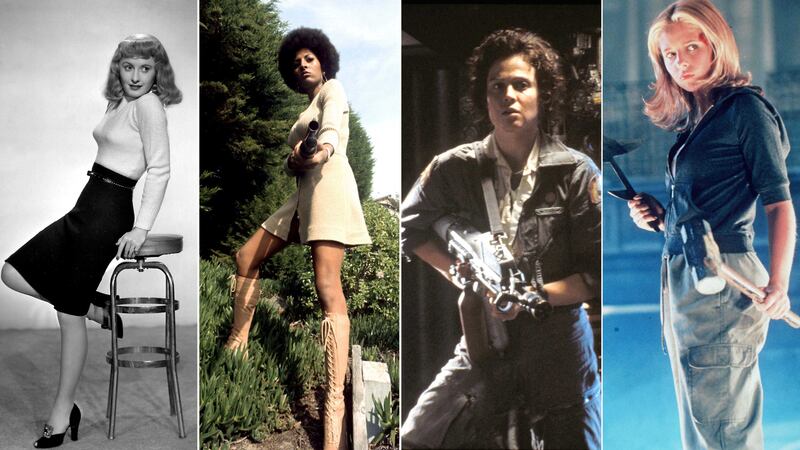Like many conversations, the one around the so-called 'Strong Female Character' began with good intentions. Or at least from a place of honesty as people sought out a different kind of female representation on screen.
But it has since become a derided phrase that is just as unwelcome as other cinematic concepts, such as the damsel in distress or the drop-dead-gorgeous woman objectified in death.
Of course, the idea of a strong female has been around for an age, with authors such as Jane Austen, Edith Wharton and Louisa May Alcott crafting characters still regarded as some of the most complex and interesting women in fiction.
In cinema and television what constitutes a strong woman has evolved from mysterious, beautiful and seductive into new representations of strength.
The femme fatale archetype should not be dismissed, however. Many of the earliest strong women characters appeared in noir crime films that peaked in popularity in the 1940s and 50s.
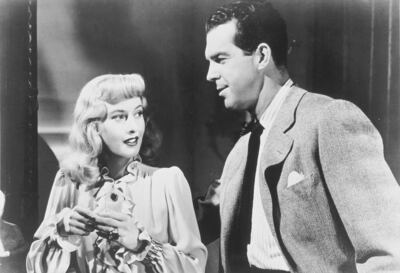
Unlike caregiver characters or romantic love interests, femme fatales were driven by their own needs and desires. They were stylish, smart and often unattainable. They stretched the boundaries of what was morally or socially acceptable. Of course many would end up dead or falling into other tropes but, for a time, femme fatales were important characters.
Femme fatales, including standouts such as Brigid O'Shaughnessy in Maltese Falcon or Phyllis Dietrichson in Double Indemnity, were often integral to the story, manipulating events in ways the male leads only become privy to towards the end.
The introduction of the Blaxploitation genre in the 1970s changed things considerably. Groundbreaking films such as Coffy and Cleopatra Jones took women who had often been written out of Hollywood or sidelined in crime fiction and put them front and centre. Although the violence and explicit content of the films made them controversial, they blazed a trail for women in action and horror movies.
It was Blaxploitation horror movies like Scream Blacula Scream and Ganja & Hess that established and set the path for the 'final girl' concept. Another iteration of a strong female 'survivor' in Hollywood, it has helped shape a key subsection of the horror genre, inspiring characters such as Laurie Strode in the Halloween series and Sidney Prescott in the Scream series.
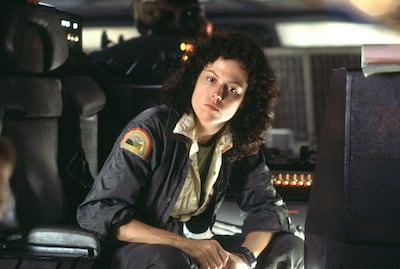
Though that was another flawed trope, there has always been a place for complex and strong women. One of the standout examples of the “final girl” concept is Sigourney Weaver's Ellen Ripley in Alien, a physically powerful woman who has to survive on her own terms.
Blockbuster films in the 1990s tested out a new version of the character. Think Sarah Connor (Linda Hamilton) in Terminator 2 or Demi Moore in GI Jane, action heroines who essentially inhabiting the role that would have traditionally been assigned to a man but bring it to life.
It was sci-fi that crafted the definitive and genre-defining lead and transformed Sarah Connor. In her performance in the 1984 original she was more of a twist on the classic damsel in distress, but in Terminator 2 Connor evolved into an action hero in her own right.
Science fiction and fantasy television has also offered interesting spaces for women to thrive as weirdos, loners and geniuses, like The X-Files' Dana Scully. But the more traditional idea of a 'Strong Female Character' then began to take shape, one that often catered to male sensibilities more than those of the women they were representing.
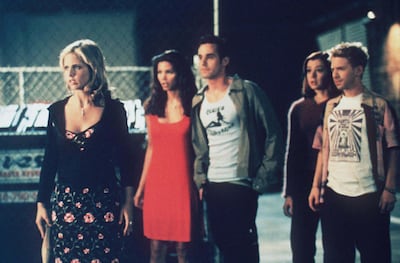
The inevitable implosion of the contemporary 'Strong Female Character' idea can be summed up by Joss Whedon and Buffy the Vampire Slayer. She was the virginal, feisty, furious, beautiful woman who was physically strong but mentally vulnerable. The woman who fell for dangerous men but could always high-kick her way out of any fight while looking as glamorous as a runway model.
Since then the idea of a 'Strong Female Character' has entered a new era. This is mostly due to the rise of the superhero movie and the introduction of Marvel's Black Widow, played by Scarlett Johannsson. Here was a woman who was physically strong but was also – like Buffy – objectified and driven by the men around her.
Black Widow removed the vulnerability of the teenage slayer and instead presented a cold, heartless, woman who, like Whedon in Avengers: Age of Ultron, became 'monstrous' when it was revealed she couldn't have children.
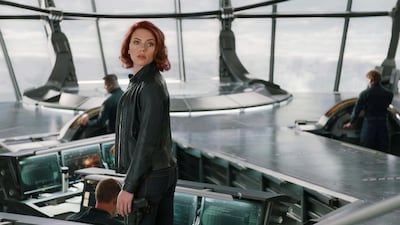
Another example is the billion-dollar grossing Captain Marvel, which saw a woman defined by her relationships to men and presented as a cold, hard, strong and often one-dimensional character.
The internet and conversation around 'Strong Female Characters' then began to change. As early as 2011, New York Times writer Carina Chocano was classing the trope as a “cinematic cliche” in her scathing article about the phrase. That piece was published just before the release of The Hunger Games, a film which features one of cinema's most stoic and sad 'Strong Female Characters' in Katniss Everdeen.
There is no one-size-fits-all representation that will serve all. The 'Strong Female Character' trope was born because of the lack of women who were perceived to be strong in mainstream media, and a lack of awareness of the strong women who already existed on the margins.
As a woman who loves cinema, I have often found my favourite characters in unexpected places. In Paul Verhoeven's Elle, Isabelle Huppert brings to life a sexual assault survivor who gets to be beautiful, furious, strong, vulnerable, unlikeable, successful and loved. There is a complexity to the role thanks to it being a rare representation of an older woman battling with the ramifications of assault and a fight for revenge.
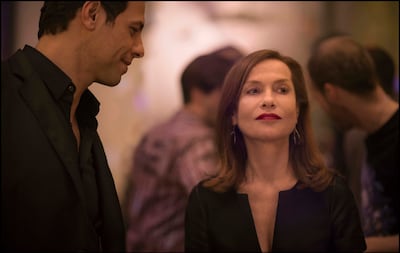
Verhoeven has never been afraid of exploring different aspects of womanhood, including his once reviled but now increasingly appreciated Showgirls, which presents its central dancers in Las Vegas as not only physically strong but also intelligent, malicious, strange, ambitious and ultimately capable of great violence. In this transgressive vision of women, certain audiences can find a far more nuanced version of the strong woman archetype than may be expected.
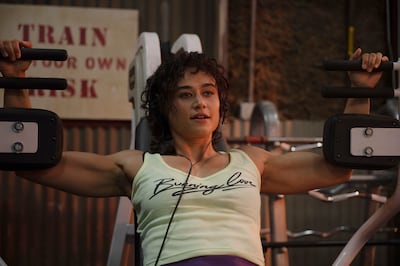
The conversation continues. In 2024, Rose Glass challenges the 'Strong Female Character' idea. In Love Lies Bleeding, she casts Katy O'Brian as Jackie, a bodybuilder whose ever expanding and growing body, combined with her violent actions, destroy Hollywood perceptions of what a strong woman should be.
It is a brutal experiment that gives this woman hope that we will get more weird, wonderful and terrible women in Hollywood who get to be as strong and strange as they want.
